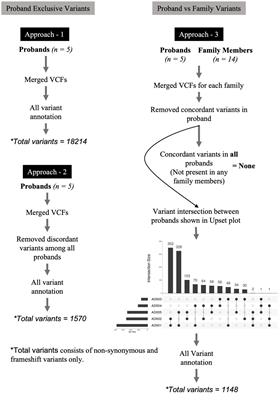Coordination among frequent genetic variants imparts substance use susceptibility and pathogenesis
Determining the key genetic variants is a crucial step to comprehensively understand substance use disorders (SUDs).

In this study, utilizing whole exome sequences of five multi-generational pedigrees with SUDs, we used an integrative omics-based approach to uncover candidate genetic variants that impart susceptibility to SUDs and influence addition traits. We identified several SNPs and rare, protein-function altering variants in genes, GRIA3, NCOR1, and SHANK1; compound heterozygous variants in LNPEP, LRP1, and TBX2, that play a significant role in the neurotransmitter-neuropeptide axis, specifically in the dopaminergic circuits. We also noted a greater frequency of heterozygous and recessive variants in genes involved in the structural and functional integrity of synapse receptors, CHRNA4, CNR2, GABBR1, DRD4, NPAS4, ADH1B, ADH1C, OPRM1, and GABBR2. Variant analysis in upstream promoter regions revealed regulatory variants in NEK9, PRRX1, PRPF4B, CELA2A, RABGEF1, and CRBN, crucial for dopamine regulation. Using family-and pedigree-based data, we identified heterozygous recessive alleles in LNPEP, LRP1 (4 frameshift deletions), and TBX2 (2 frameshift deletions) linked to SUDs. GWAS overlap identified several SNPs associated with SUD susceptibility, including rs324420 and rs1229984. Furthermore, miRNA variant analysis revealed notable variants in mir-548 U and mir-532. Pathway studies identified the presence of extensive coordination among these genetic variants to impart substance use susceptibility and pathogenesis. This study identified variants that were found to be overrepresented among genes of dopaminergic circuits participating in the neurotransmitter-neuropeptide axis, suggesting pleiotropic influences in the development and sustenance of chronic substance use.
The presence of a diverse set of haploinsufficient variants in varying frequencies demonstrates the existence of extraordinary coordination among them in attributing risk and modulating severity to SUDs.
Read the full article at the original website
References:
